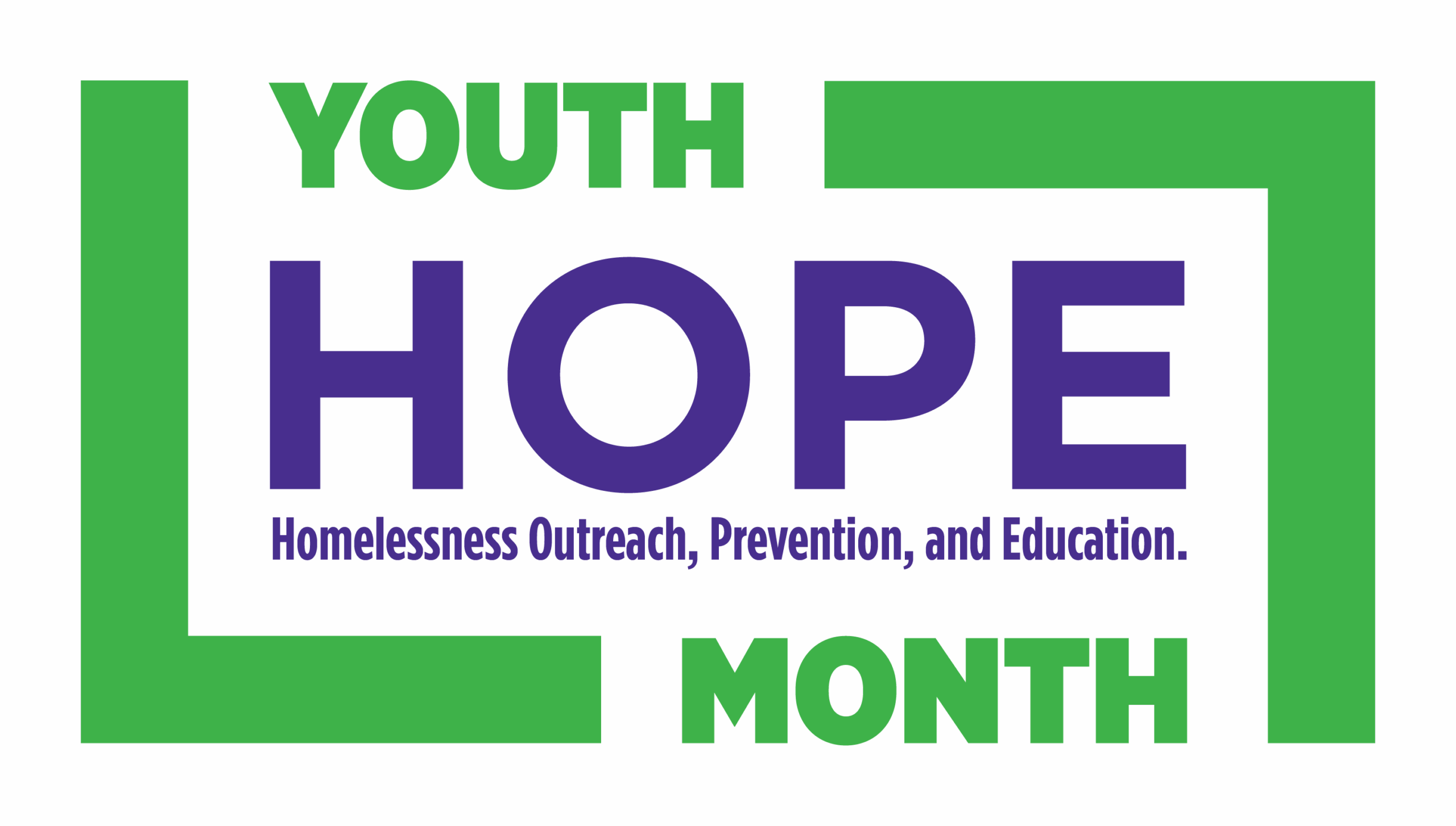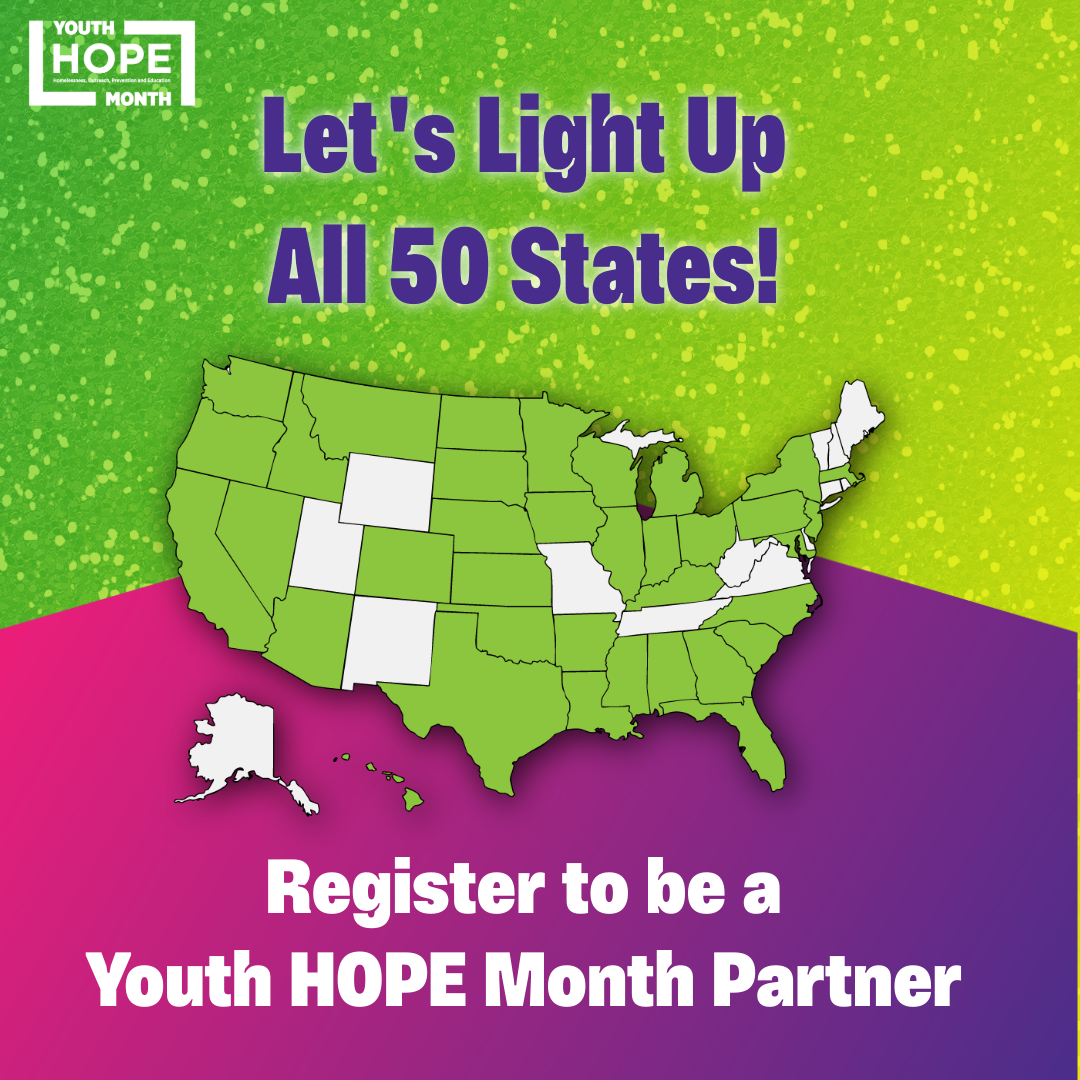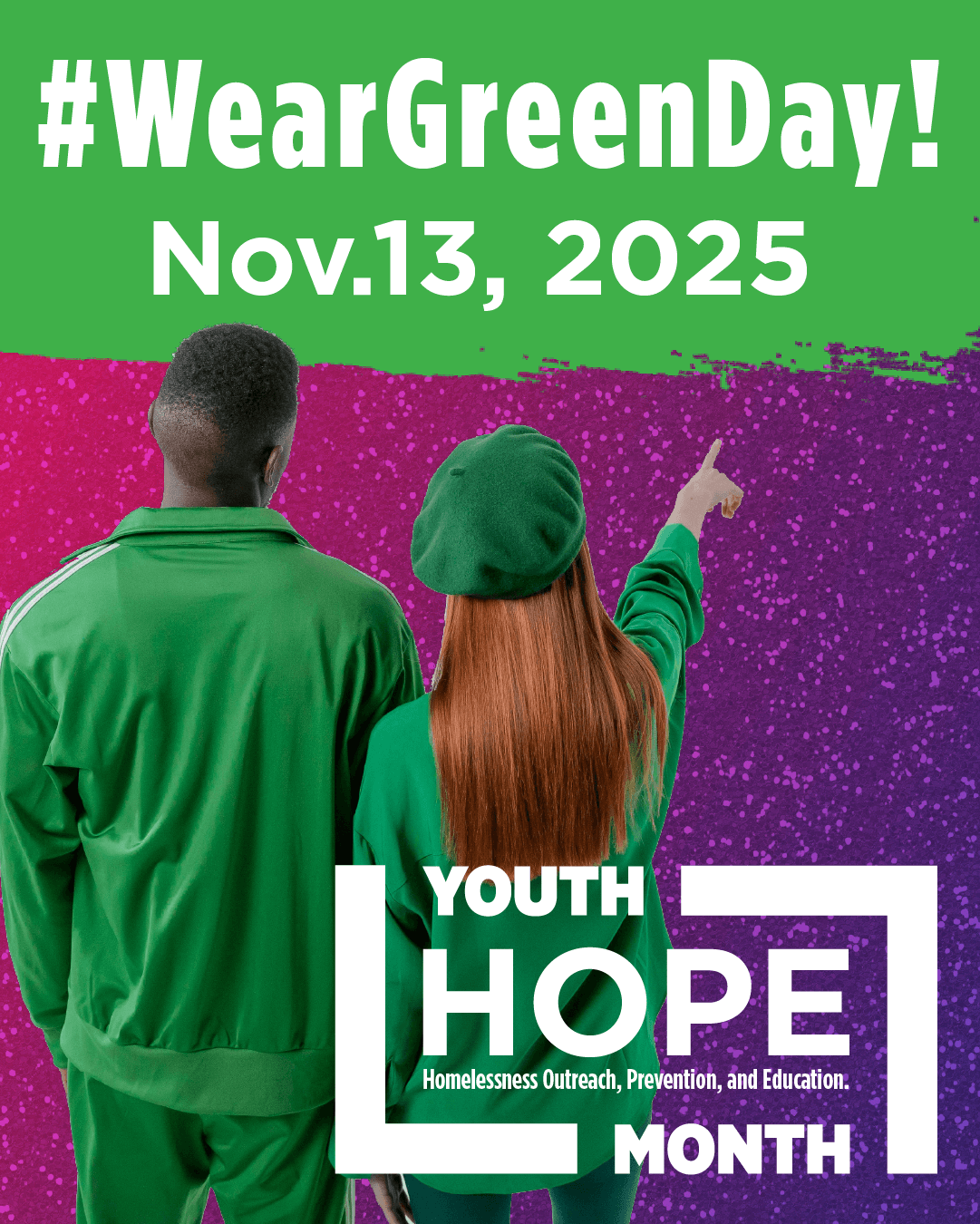
November is Youth Homelessness Outreach, Prevention, and Education (HOPE) Month
Each year, an estimated 4.2 million young people between the ages of 13 and 25 experience homelessness in the United States. Many of them face unimaginable challenges — fleeing unsafe homes, sleeping on couches or in shelters and struggling to meet basic needs.
Youth HOPE Month, formerly known as National Runaway Prevention Month, is a powerful opportunity to shine a light on youth homelessness, spark conversations and take meaningful action to support youth in crisis.
Our Goals:
- Raise awareness of youth homelessness and the importance of prevention
- Educate the public about how local communities and systems of care can work together to address youth homelessness
- Increase visibility of the services offered by the National Runaway Safeline/National Communication System and other service providers across the country
Your Voice Matters! Get Involved Today!
Register as a Youth HOPE Month partner – collectively, we can shine a light on the often-overlooked experiences of runaway and homeless youth. On the streets, youth are at higher risk of violence, exploitation, addiction and mental health challenges.
But it doesn’t have to be this way. Let’s spotlight the programs and resources that help empower young people to thrive and achieve safety, stability and wellbeing.
Toolkit

This toolkit was developed to help organizations and individuals plan and implement Youth HOPE Month awareness-building activities in local communities and on social media.
Mark Your Calendar: Wear Green Day is November 13!
On Thursday, November 13, join us for Wear Green Day — a day to stand up for youth experiencing homelessness.
Let’s unite as a community, wear green, and shine a light on youth homelessness.
Partner Spotlight Articles

Project Hope Alliance
Project Hope Alliance supports 400 kids experiencing homelessness from kindergarten to age 24 as well as their family, touching the lives of over 1,100 individuals. They strive to end generational homelessness through education and empowerment because when kids experiencing homelessness graduate from high school, they are 400% less likely to experience homelessness as adults. After all, 95% of youth in their program graduate high school, compared to the California state average of 74% for youth experiencing homelessness.
By seamlessly weaving services into a student’s daily routine at school, Project Hope Alliance has also had the correlating ability to reduce shame, fear, and disjointed services. PHA’s site-based approach has become a model of best practice for serving students and their families who experience homelessness.


